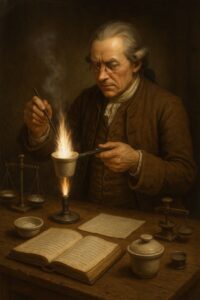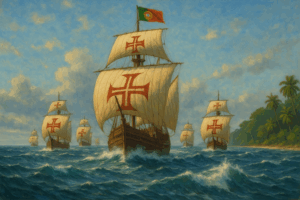Pelicans are enormous waterbirds that rank among the heaviest flying animals, with a wingspan of up to 3.60 meters, a body length of 1.80 meters, and a weight of up to 15 kilograms.
The great white pelican (Pelecanus onocrotalus) is one of the largest species of this genus and inhabits regions between Southern Europe and Central Africa, as well as India. Occasionally, individual pelicans strayed into our latitudes, where they appeared so strange to people that they were called “Sack Goose,” “Crop Goose,” or even “Non-Bird” in German – names which eventually found their way into the species name onocrotalus. Since antiquity, vast flocks have made a “pit stop” in Israel on their way to their African wintering grounds.
Despite its impressive size, the pelican is completely defenseless and extremely shy. At the slightest hint of danger, the entire colony panics, which is why it seeks out the most remote areas possible. Its nesting sites – sandbanks, lake or river islands, as well as steep cliffs or old ruins – are difficult for predators to access.
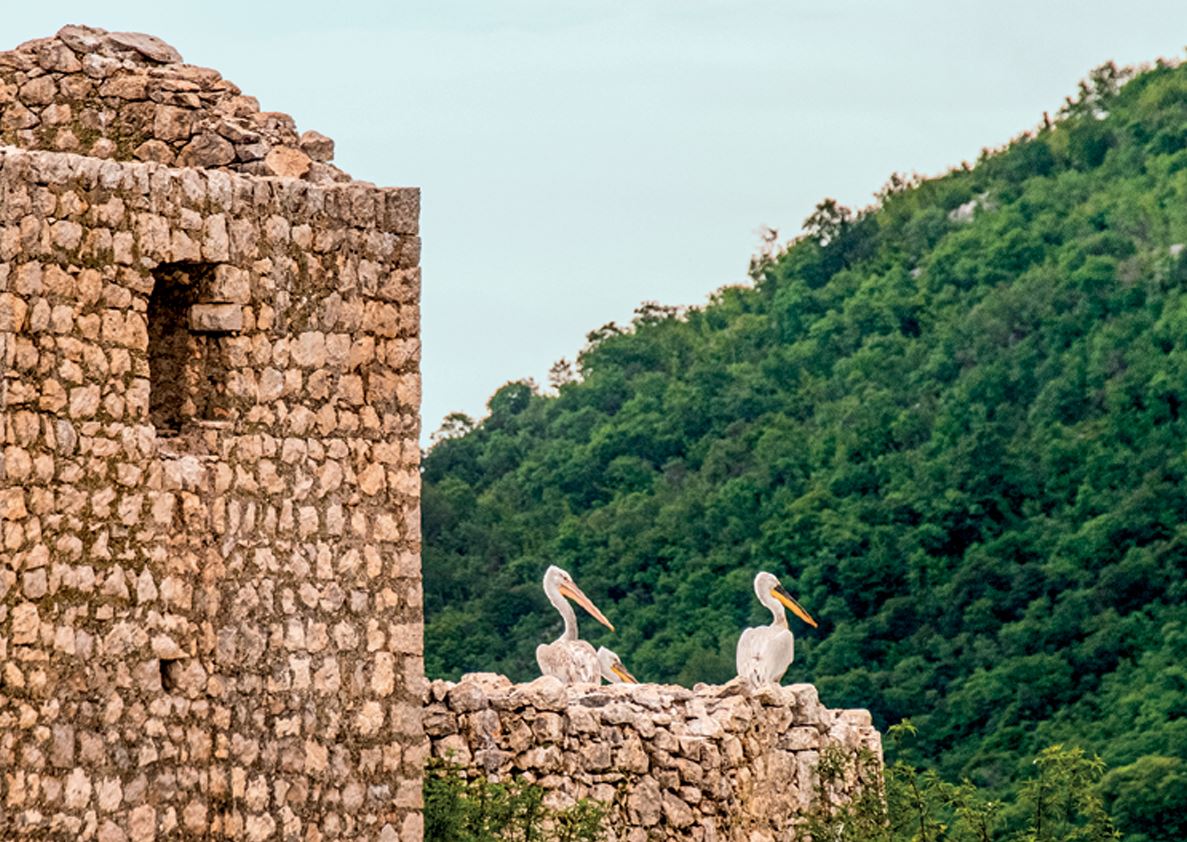
“He will… make Nineveh a desolate ruin, parched like a desert. Herds will lie down there, creatures of every kind. The pelican and the bittern will roost on her columns” (Zeph 2:13-14). This verse describes the desolation of Nineveh, the once-flourishing and important capital of the Assyrian empire. After its destruction by the Babylonian army in 612 BC, it was abandoned by its inhabitants. Its advanced irrigation systems fell into disrepair, and the surroundings of the deserted ruin city on the east bank of the Tigris turned into an expansive swamp – an Eldorado for pelicans. As foretold, sandstorms later covered the ruins: “You will be hidden” (Nah 3:11). The animals that once visited disappeared, and only the desert remained. When Alexander the Great passed through the area three centuries later and inquired about Nineveh, none of his scholars could say where the once-world-ruling metropolis had been. The godless philosopher Voltaire scoffed that it was a biblical myth, but in 1842 the city was rediscovered by his fellow countryman Paul-Émile Botta, and since then the biblical accounts have been confirmed by archaeological finds.
In the Greek word pelekana, used in the Septuagint, the word “pelican” is easy to hear. Its Hebrew name ka’at is related to the verbs ko and kaja, meaning “to spew out.” This name likely stems from the bird’s habit of regurgitating pre-digested food – a kind of “fish soup” – for its chicks.
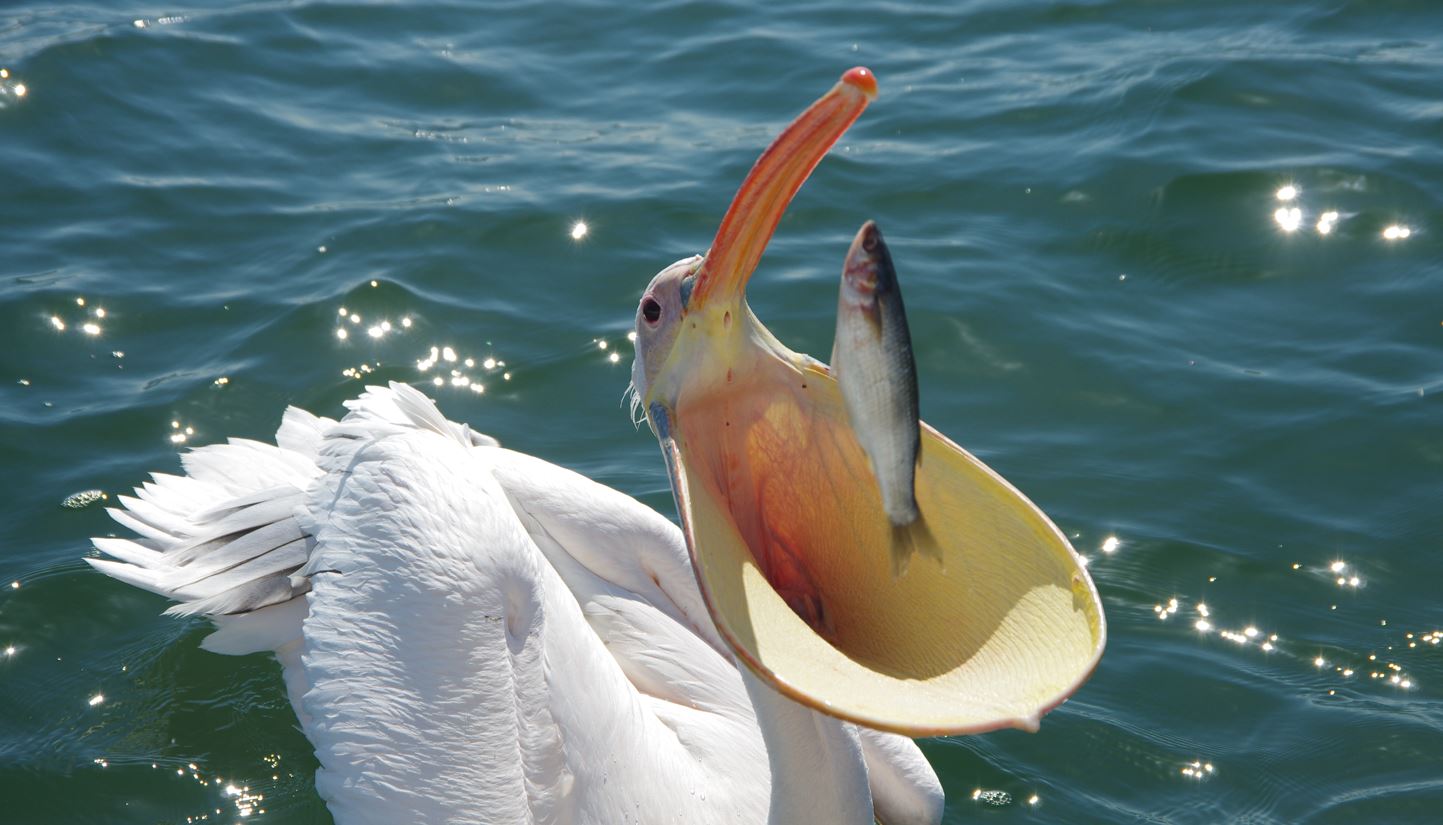
Its German name “Rosapelikan” comes from a faint reddish hue that originates from the secretion of the uropygial (preen) gland, which the pelican meticulously distributes through chewing motions with its beak across its white feathers. But this is not just cosmetic – it’s a vital protective measure. The mixture contains antibiotics and tannins that protect the feathers from parasites. Even more important are the lipids: without the water-repellent oil film, its feathers would soak instantly and drag it down like lead. As a bird, it is primarily made for flying and would drown if it didn’t prepare itself each day for contact with the wet element.
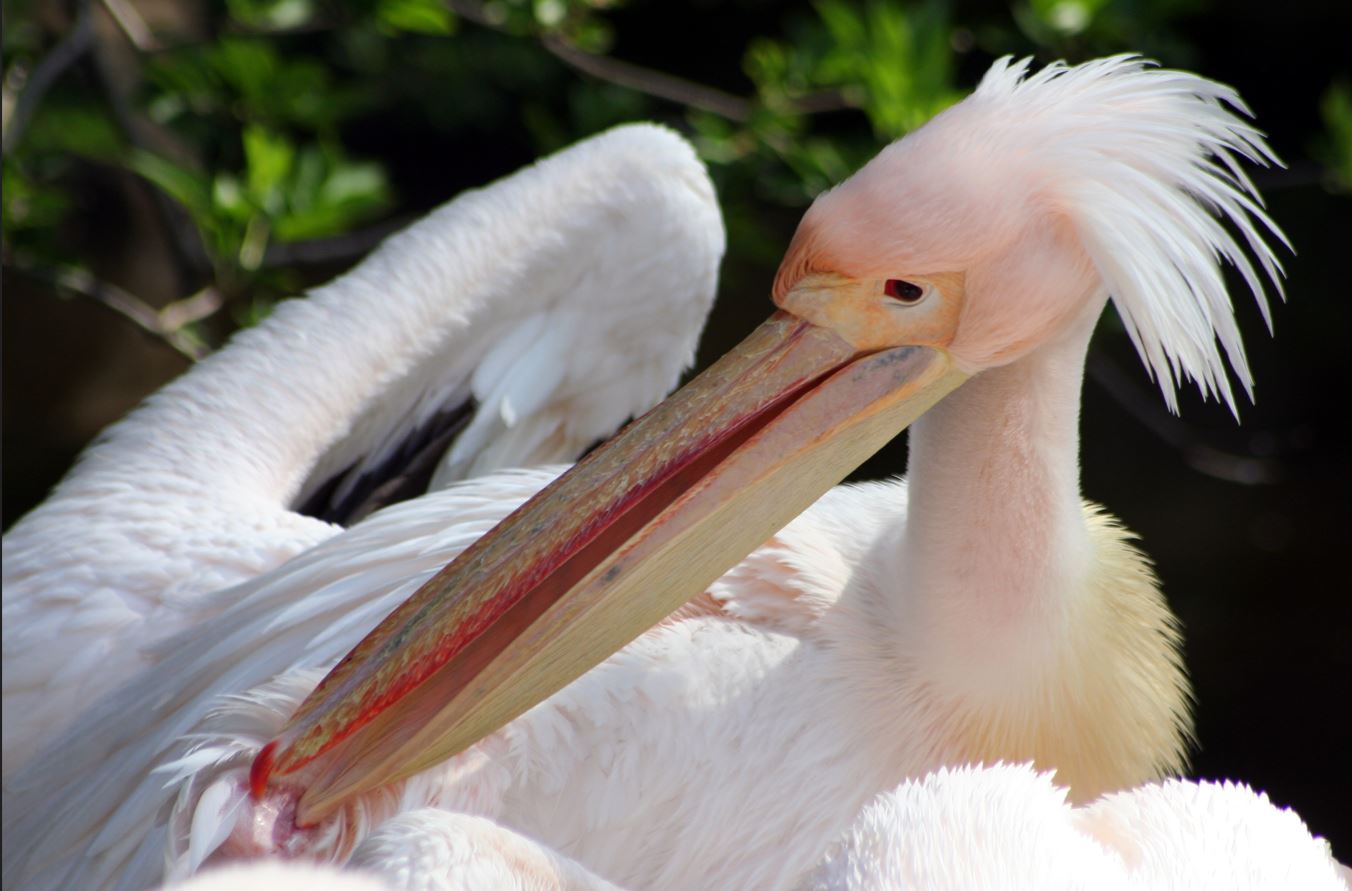
This reminds us that Christians, according to their true calling as “citizens of heaven” (Phil 3:20), are “in the world but not of the world” (Joh 17:11.14), existing in a foreign element from which they must carefully protect themselves. Remarkably, this protection also comes from an “anointing” that creates a firm connection to Jesus Christ (2Cor 1:21), distinguishes truth from falsehood (1John 2:20.27), and works as a force in our lives (Joh 3:8; 1Cor 12:11): the Holy Spirit, who dwells within us. Only under His guidance do we realize that the entire material reality surrounding us is ultimately caused by spiritual forces – we arrive at a true understanding of causality.
The pelican’s most striking feature is its astonishing beak, which, at nearly half a meter long, is not only the largest in the bird world, but also a highly specialized fishing tool. The upper beak fits perfectly onto the lower beak, which, thanks to the expandable throat pouch, can become a “scoop bucket” with a capacity of 13 liters. It uses this mechanism like a net: swimming quickly forward, it plows its lower beak through the water, fully extending the pouch. Suddenly it jerks it upward, closes it with the upper beak, and presses the water out through a narrow gap. What remains are wriggling fish, which it swallows whole thanks to an extremely elastic esophagus. For anglers and fishermen, the pelican has long been an unwelcome competitor. In old documents, it was referred to as a “water glutton” and “insatiable bird.” Indeed, it needs to catch more than a kilogram of fish per day, as fresh fish is its only food source.
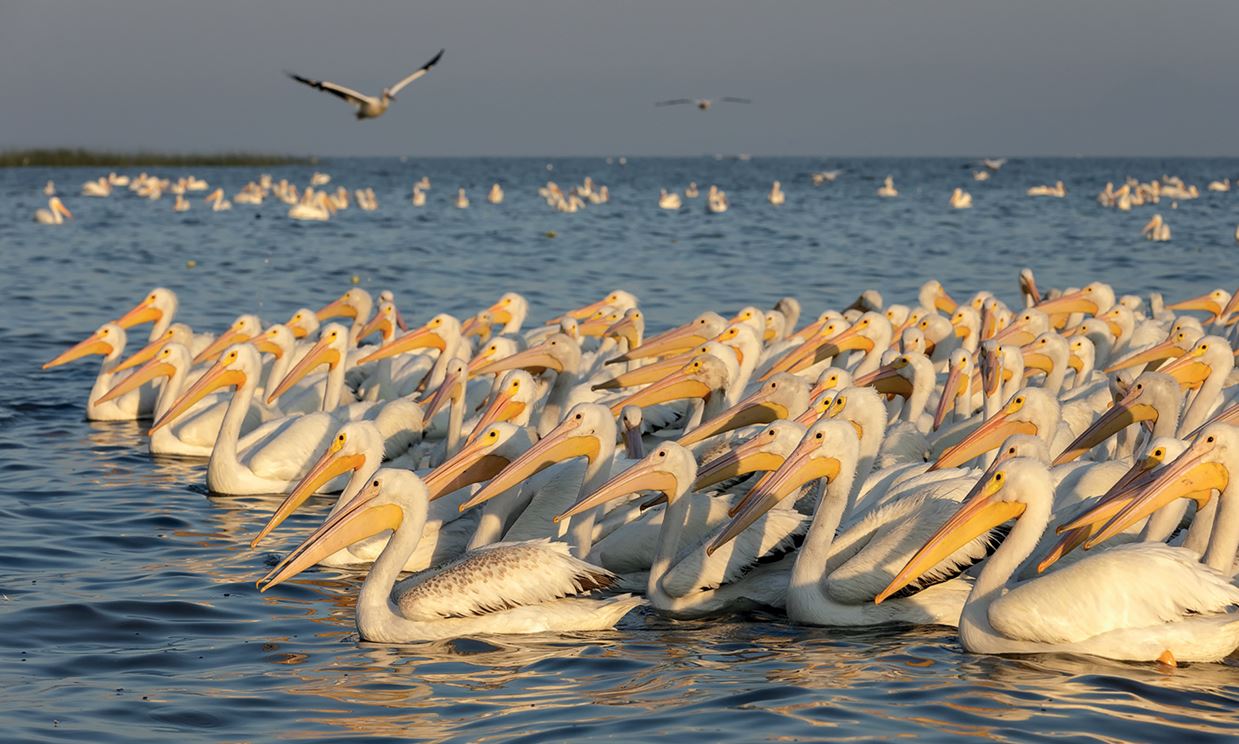
A special spectacle is their collective cooperation using different hunting strategies. Sometimes they form a semicircle to drive fish into a shallow bay; at other times they swim toward each other in a circle and scoop the prey from the center. In a third maneuver, two teams swim toward each other in a straight line and scare the panicked fish into each other’s open beak pouches by flapping their wings vigorously. It remains somewhat puzzling why they engage in these group activities. One would expect their success to increase through teamwork – but it does not. A thorough study showed they catch the most fish when hunting alone. Perhaps they just enjoy doing things together.
It’s obvious that a waterbird specialized in fishing and dependent on it for survival is doomed in the desert. Without large open water surfaces, it inevitably starves. Millions of viewers around the world watched the successful nature documentary Animals Are Beautiful People as young pelicans, accompanied by the sorrowful prelude from La Traviata, marched to their doom through a barren wasteland. This tragedy occurs in years of extreme drought when their nesting grounds in the Okavango Delta dry out before the rainy season begins and the fledglings are not yet able to fly. Their parents have no choice but to leave them behind, alone and doomed, in the merciless desert.
It is very moving that the Bible addresses this situation in the “Prayer of the afflicted when he is overwhelmed”: “I am like a pelican in the wilderness” (Ps 102:6). On a deeper level, these bird images reflect the suffering of the Messiah and Son of God, Jesus Christ. In the desert, the pelican is a foreign body, for whom there is “nothing to be gained.” – For the Spirit of the Lord Jesus, whose food it was to do His Father’s will (Joh 4:34), there was no sustenance in a sinful world.
Quellennachweis:
Izhaki, I; Shmueli, M; Arad, Z: Satellite Tracking of Migratory and Ranging Behavior of Immature Great White Pelicans. Waterbirds 2002; 25(3):295-304; doi: 10.1675/1524-4695(2002)025[0295:STOMAR]2.0.CO;2
Jacob, J; Eigener, U; Hoppe, U: The Structure of Preen Gland Waxes from Pelecaniform Birds Containing 3,7-Dimethyloctan-1-ol -an Active Ingredient against Dermatophytes. Zeitschrift für Naturforschung 1997; 52(c):114-123; doi: 10.1515/znc-1997-1-220
Kopij, G; Paxton, M: Waterbirds in the panhandle of the Okavango Delta: dry season counts over two seven-year-periods. Zoology and Ecology 2019; 29(1):15-27; doi: 10.1080/21658005.2019.1.3
Saino, N; Fasola, M; Waiyakp, E: Do White Pelicans Pelecanus onocrotalus benefit from foraging in flocks using synchronous feeding? IBIS 1995; 137(2):227-230; doi: 10.1111/j.1474 919X.1995.tb03243.x
Weimerskirch, H; Martin, J; Clerquin, Y: Energy saving in flightformation. Nature 2001; 413:697-698; doi: 10.1038/35099670
Bildnachweis:
Pelican sitting on tree trunk / AdobeStock_222949678.jpeg / thecriss // Pelican preening feathers / AdobeStock_5645056. jpeg / Dream-Emotion // Pelican swallowing fish / AdobeStock_67530058.jpeg / sekundemal // Group of pelicans swimming / AdobeStock_139734579.jpeg / Martin Rudlof // Two pelicans on ruins / shutterstock_1441030079.jpg / Alvis Dadzis
